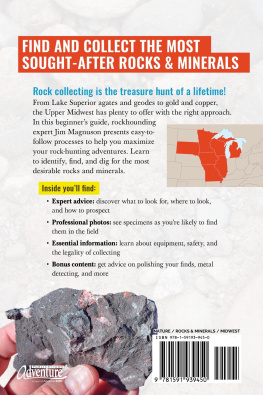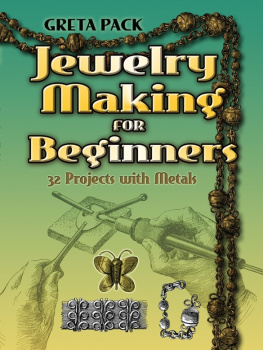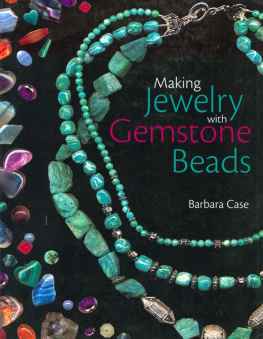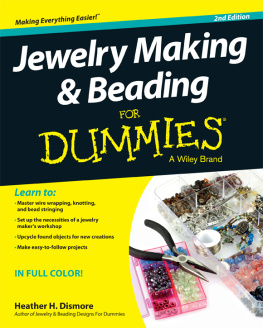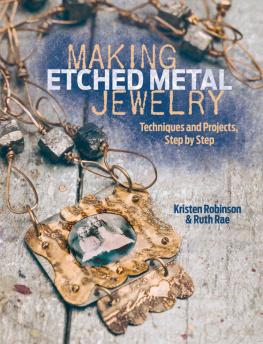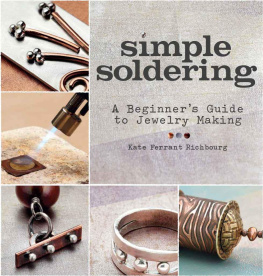

Dedication
In memorial to my father and mother, who unknowingly gave me a great love for working with my hands and a great love of rocks. I guess it was inevitable that I became a lapidary artist and teacher.
With great love and respect, Val Brubaker Carver
We would like to thank our sister Ann OKeefe for her continued partnership in our book-making adventures.
Jim Magnuson and Carol Wood
Cover and book design by Jonathan Norberg
Edited by Dan Downing
All photos by Carol Wood
10 9 8 7 6 5 4 3 2
Copyright 2015 by Jim Magnuson
Published by Adventure Publications
820 Cleveland Street South
Cambridge, Minnesota 55008
(800) 678-7006
www.adventurepublications.net
All rights reserved
Printed in U.S.A.
ISBN: 978-1-59193-460-8; eISBN: 978-1-59193-535-3

Table of Contents

Introduction
The Lapidary Arts
If you have ever marveled at beautifully cut, polished and shaped gemstones and wondered what it would take to create your own, you might be surprised at how quickly you can learn how to do it! With a little focused instruction and todays advanced tools and equipment, you can discover the rewarding experience of taking rough stones and making your own creations. And youll be pleased to learn that creating finished gemstones is quite affordable, especially when compared with many other popular hobbies.
There are numerous books and online articles and videos about cutting, polishing and drilling gemstones and making them into cabochons, which are shaped, domed and polished stones commonly used in jewelry. (Taken together, these processes are generally referred to as the lapidary arts.) So why create another lapidary book? Unfortunately, most of the material that is currently available is badly out of date or irrelevant to todays readers. Worse yet, older books dont provide the high-quality, full-color images that hobbyists need to learn lapidary processes. Additionally, none of the existing publications provide up-to-date information about the costs of lapidary machinery and the tools and supplies needed for each lapidary process. And finally, there is no single guidebook that comprehensively covers each of the different lapidary processes from start to finish. This often leaves the user guessing about how everything fits together.
You might also wonder why you shouldnt just skip ahead to the internet and look for instructional videos on YouTube. We wholeheartedly endorse supplementing your learning with online video clips, but only after you have gained an understanding of the different tools and processes youll be using to create lapidary products. You will get several additional things in this book that you will not get from a set of random video clips:
1) Recommendations on lapidary machines, in terms of machine types, makes and models, and approximate prices of the different machine types, as well as additional supplies and materials needed for lapidary work.
2) Reference charts that help you pull together information on how to go about different projectsstarting from the very beginning, with knowing the types of gemstones to use.
3) Simple, easy-to-follow directions that are complemented by action-oriented photos that clearly represent the simplest and most reliable way to perform key lapidary operations. Along the way, we show you how a project progresses from a rough stone to a finished product, helping you visualize the transformation of raw gemstone to lapidary artwork.
4) Helpful tips, charts and checklists to jump-start your learning, help you overcome the fear of getting started, and help you stay efficient, all while simultaneously helping you keep costs down. These tools will help beginners achieve success quickly and make the best use of precious time, gemstones and lapidary supplies. They will also be useful as reference charts for years to come, and they can be adapted to your own preferences and experiences.
5) And perhaps the most helpful aspect of this book is that in addition to covering lapidary processes and the equipment necessary to perform them, we show how these techniques and tools relate to each other, and how they work together to take you from start to finish.
Our goal with this book is to provide a one-stop shop for beginners and for others who have recently started their lapidary journey. Some of you may have tried out a lapidary process, such as tumbling, only to get frustrated and quit altogether. Well help you avoid that. We have intentionally left out the most complex and costly lapidary methods and machines, such as commercial equipment and combination machines (arbor and trim saw combinations, for example). Similarly, including complex wire wrapping and jewelry setting is likely to frustrate the beginner, as it takes a good deal of skill and practice, so instead weve included some basic styles and techniques that you can easily modify to create your own designs. (For those looking for more advanced instruction, see .) We also dont include information about rock breaking or rough slab sawing of very large pieces of stone, such as oversized chunks of jasper or petrified wood (smaller pieces of these materials are fine), because the equipment required is quite costly, and its easy to obtain pre-cut slabs from lapidary stores. And lastly, we dont cover how to produce spheres or marbles, as this equipment is more specialized and expensive.
Instead, this book will keep it simple and cover a variety of the most popular lapidary arts, helping you produce high-quality gemstone products that you will be proud to display, wear or even sell!

Getting Started
Materials, Machines and Finished Products
In this chapter, well cover the basics of gemstone materials, the types of lapidary products you can make from them and the general process steps and lapidary machines you need to know about.
Most hobbyists start with the simplest projects and work their way up, but others have a specific goal in mind, like making jewelry, and therefore they want to quickly learn each of the necessary operations. Regardless of where you fit in this spectrum, keep in mind that lapidary supply stores can provide you with gemstones that have been partially processed, which allows you to jump in wherever you are comfortable or most interested.
Gemstone Materials Commonly Used in Lapidary Work
Not all stones are suitable for performing lapidary arts, and there are some that are quite difficult to work with, so in this book we focus on a variety of accessible and affordable stones that you can turn into beautiful showpieces and jewelry. To work a stone, it must be hard enough to be cut, shaped and polished. The Mohs hardness scale is used to express the hardness of different minerals, with a hardness of 1 being the softest (talc has a hardness of 1) and 10 being the hardest (diamonds are a 10). The majority of stones that we recommend are in the 67 range; examples include agate, jasper and turquoise. There is an endless variety of colors and patterns in the gemstones we recommend, so they should be more than suitable for whatever project you want to complete. On occasion, these gemstones differ in hardness; when this affects a lapidary process, well give you tips on how to work such a stone.
Next page

